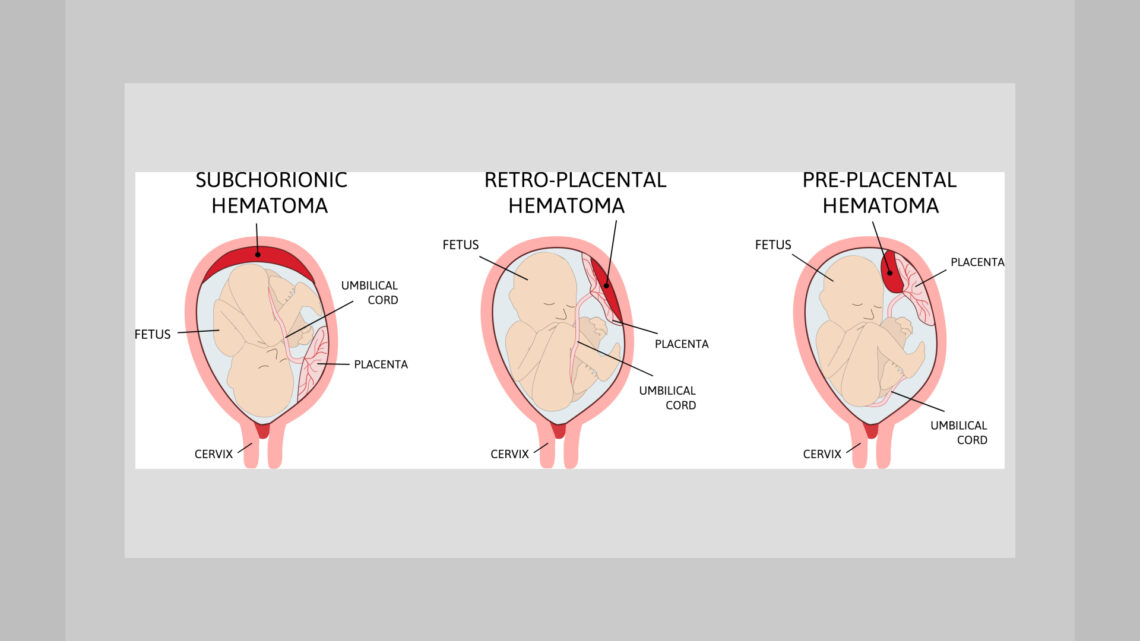Abstract:
Sub chorionic hematoma is a condition that can occur during pregnancy and lead to complications in pregnancy, including miscarriage It is thought to occur due to the partial detachment of chorionic membrane from the wall of the uterus.
Early detection and treatment of SCH can help reduce the risk of complications and improve the chances of a healthy pregnancy outcome. SCH is associated with an increased risk of pregnancy loss if it accounts for 25% or more of the gestational sac volume.
The risk is even higher when the location of the hematoma is retro placental.The management of SCH typically involves monitoring, bed rest and medications. Homeopathic remedies are selected based on the individual’s unique symptoms and characteristics and can help to reduce inflammation and improve blood flow to the affected areas. This approach offers a safe and effective alternative to more invasive treatments and warrants further investigation as a potential treatment option for sub chorionic hematoma.
Keywords: Sub chorionic hematoma, SCH, homeopathy, case report
Background:
Sub chorionic hematoma, also known as sub-chorionic hemorrhage, is a condition that occurs during pregnancy when there is blood clot formation and bleeding in the space between the chorion (outermost membrane that surrounds the embryo), and the uterine wall. Sub chorionic hematoma is relatively common, occurring in up to 16-20% of pregnancies, but most cases are minor and do not pose a significant threat to the pregnancy.1
The exact cause of SCH is not entirely understood, but it is thought to result from the separation of the chorionic and decidual layers of the placenta.1 This separation may be due to a variety of factors, including trauma, hormonal imbalances, and infections such as bacterial vaginosis or abnormalities in the blood vessels supplying the placenta.1
As a result, blood accumulates in the space between the placenta and the uterine wall, forming a blood clot. The size and location of the blood clot can vary, and in some cases, it may resolve on its own without any complications. While in other cases, it can lead to serious pregnancy complications such as preterm labor, miscarriage, or stillbirth.2
There is some evidence to suggest that mental stress may be a risk factor for sub chorionic hemorrhage (SCH).3 Stress can cause the body to release hormones such as adrenaline and cortisol, which can lead to vasoconstriction and reduced blood flow to the uterus and placenta.
This can increase the risk of bleeding and the development of SCH.4,5 Symptoms of SCH may include vaginal bleeding, cramping, or pelvic pain, although many women with this condition have no symptoms at all and are found incidentally during the obstetric scan.1
Treatment for SCH typically involves close monitoring of the pregnancy, bed rest, and sometimes medications to prevent preterm labor. Recent studies have suggested that progesterone therapy may be beneficial in reducing the risk of miscarriage in SCH.1
It is important to note that not all SCHs lead to complications, and in many cases, they resolve spontaneously without any long-term effects. However, it’s essential to monitor any bleeding or symptoms during pregnancy and seek medical attention.6
While alternative therapies including homeopathy may be appealing to some individuals seeking to manage SCH, there is currently no scientific evidence to support their effectiveness in treating this medical condition. Several studies have shown positive outcomes for the use of homeopathy in treating various gynecological conditions.7,8,9 This case report suggests an alternative for the treatment of SCH with classical homeopathy.
Case report:
A 28-year-old female was diagnosed with sub chorionic hematoma and corpus luteum cyst on 03/11/2022. Her pregnancy was confirmed on 31/10/2022.She presented with heavy vaginal bleeding after fright and was hospitalised. The gynaecologist reported that the patient was in the process of having an abortion. Patient was treated with progesterone pills for a week. The heavy bleeding stopped. However, the dark blood discharge continued. The findings of the obstetric scans before homeopathic treatment are listed in table 1. At this juncture, patient sought homeopathic help. The symptoms available for initial prescription on 19/01/2022 were as follows:
- Genitalia-female-abortion, miscarriage-fright from (+++)
- Sleep-sleeplessness-grief, from (++)
- Generalities-weakness-grief from (++)
- Chill-fright, from (+++)
- Mind-sighing (+++)
- Mind-sadness, mental depression (++)
| Date: | Scan report findings- |
| 31/10/2022
(Figure 1) |
Single intrauterine gestation with gestational age of 4 weeks 5 days plus or minus 1 week (gestational sac diameter 9.3mm)
Yolk sac visualised. Foetal pole cardiac activity not visualised. POD and adnexa are normal. GA by LMP 5 weeks 4 days. GA present USG 4 weeks 5 days. |
| 3/11/2022
(Figure 2) |
GA 5 weeks 6 days (Gestational sac 10.7mm).
Yolk sac and foetal pole of CRL 2.8mm. No definite cardiac activity. Sub chorionic hematoma covering>75% of gestational sac (15.5mm thickness) Hyper echoic area of size 1.8 to 2.1cm in right ovary possibly hemorrhagic corpus luteal cyst. No free fluid in POD |
| 10/11/2022
(Figure 3) |
GA by LMP 6 weeks 6 days
GA by USG 6 weeks 1 days, CRL 4.2 mm Sub chorionic haematoma with involvement of 75% gestational sac (9mm thick) Feeble cardiac activity 112 bpm |
Table 1 – obstetric scan findings before homeopathic treatment

Figure 1 – Obstetric scan as on 31/10/2022
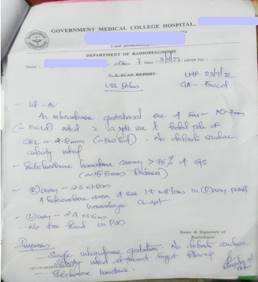
Figure 2 – Obstetric scan as on 03/11/2022
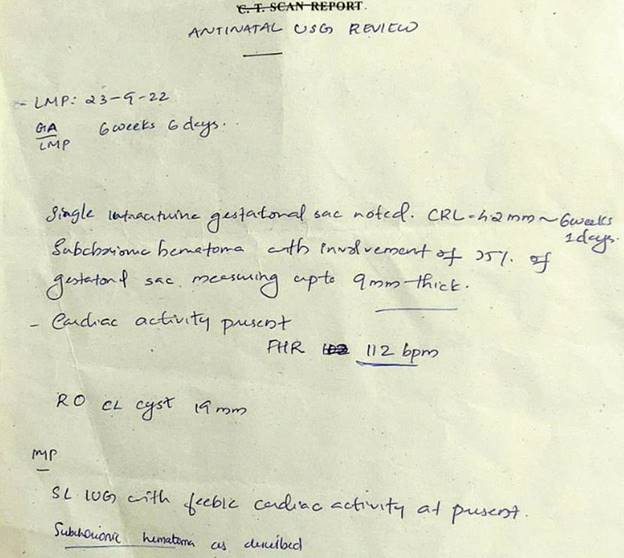
Figure 3 – Obstetric scan as on 10/11/2022
Past history:
- Elbow joint fracture at 8 years of age.
- Somnambulism during childhood.
- Patellar dislocation – 8 years ago.
- She was diagnosed with inter vertebral disc prolapse (IVDP) 7 years ago.
- She was diagnosed with mitral valve prolapse (MVP) 7 years ago.
- Anal fissure since 6 years.
- She developed sebaceous cyst which was surgically drained 4 years ago.
- She develops fever once a year and her last high fever (1020F) was one year ago.
- She has developed hemorrhoids since 6 months.
- She has developed bleeding gums while brushing teeth since 3 months.
Mental/emotional history:
- The patient experienced a frightful incident on 30/10/2022. In the evening, she developed abdominal pain. On 31/10/2022 – she noticed vaginal bleeding accompanied with weakness and abdominal pain. On 03/11/2022 – she experienced heavy bleeding and was taken into emergency room.
- The patient was suffering from depression and mood changes. She kept sighing often and would weep sometimes.
Personal history:
- Her sleep was disturbed.
- She felt chilliness – on and off.
Diagnosis: Sub chorionic hematoma (ICD-10:O46.90)10
Case analysis and prescription:
After a thorough investigation, Ignatia amara 200CH one dose was prescribed on 19th November 2022. (Figure 4) Professor Vithoulkas says Ignatia is one of the important remedies for abortion from fright. It is also one of the major remedies for ailments from grief which results in characteristic sighing.11The follow up of the case is listed in Table 2.
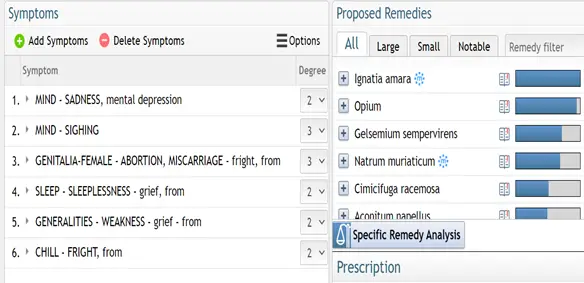
Figure 4 – Repertorial result as on 19/11/2022 (Vithoulkas compass)
| DATE | SYMPTOMS | SCAN REPORT FINDINGS | PRESCRIPTION |
| 26/11/2022 | Patient had a dream of getting menses on the same day.
After 24 hours, mood swings and sadness were much better. Vaginal bleeding and abdominal pain subsided in the following days. Scan also showed the reduction in sub chorionic collection to less than 25% (Figure 5). Case is doing better both emotionally and generally. |
GA by USG 8 weeks 5 days by CRL.
Yolk sac + Sub chorionic hematoma now measuring<25% of sac uterine inference. Foetal heart rate -170bpm (Figure 5) |
Nil |
| 24/12/2022 | Patient had a mild outbreak of tinea in the vulva, with severe itching.
Emotionally, patient is much happier. Weakness is much better. |
Gestational age by LMP 13 weeks 1 day.
Gestational age by USG 12 weeks 3 days, CRL- 5.9CM. Good cardiac activity. Placenta anterior cervix 4.0 cm Nasal bone visualised. Nuchal thickness: 0.09cm with normal limits. Uterine artery Doppler shows normal colour flow, flow velocity and spectral pattern. No abnormality. Low resistance noted. (Figure 6) The first trimester screening report was negative without any risk to the growing foetus. (Figure 7) |
Nil |
| 30/01/2023 | Patient received tetanus injection as a part of routine course of treatment.
She was experiencing startling during sleep for a few days. She had nausea and weakness which reduced on its own. She developed pustules on pubis which resolved on their own. The itching from tinea increased and reduced on its own. Case was doing better in general. |
– | Nil |
| 09/02/2023 | Patient is doing better in general.
Emotionally, she feels much happier. There are no new complaints.
|
Single intrauterine live foetus of 19 Wks 3 days gestational age.
Features of persistent left superior vena cava. Foetal echo suggested. No other sonologically demonstrable structural anomalies. (Figure 8) Foetus is showing persistent left vena cava, which is benign and may resolve on its own with time.(Figure 9) |
Nil |
Table 2 – Follow up of the case.
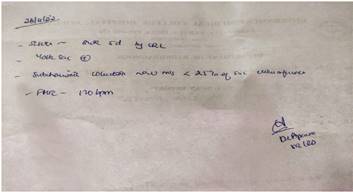
Figure 5 – Obstetric scan as on 26/11/2022

Figure 6 – Obstetric scan as on 24/12/2022
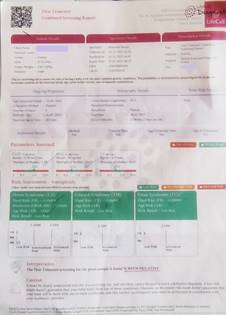
Figure 7 – First trimester screening report as on 27/12/2022
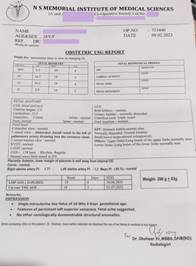
Figure 8 – Obstretic scan as on 09/02/2023
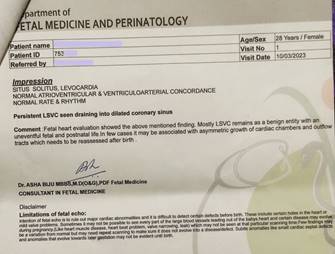
Figure 9 – Foetal echo scan as on 10/03/2023
Discussion:
Sub chorionic hematoma (SCH) is a common condition that affects many pregnant women. Mostly SCH does not pose a significant risk to the pregnancy. However, it can lead to complications such as miscarriage, preterm labor, or placental abruption.1The presence of a corpus luteum cyst during early pregnancy can increase the risk of SCH, possibly due to the increased hormonal support provided by the cyst. Additionally, SCH can cause complications such as corpus luteum cyst rupture. In such cases, surgical intervention may be necessary to reduce the risk of adverse outcomes. However, surgery is not always the best option during pregnancy. Especially for women who wish to avoid invasive procedures during pregnancy, alternative therapies such as classical homeopathy may be considered.
Classical homeopathy is a holistic approach that aims to stimulate the body’s natural defense mechanism by considering the underlying cause of disease. Homeopathy can help to reduce the inflammation, improve blood flow, and support the body’s immune system, which may be beneficial in managing SCH.12,13
In the above case, the patient’s emotional state after a traumatic event played a significant role in the development of SCH. The homoeopathic treatment evaluated the cause for the development of pathology and examined the peculiar symptoms that were produced by the body to bring balance.14,15 The remedy prescribed improved the patient’s symptoms and stabilised her general condition.Homeopathy was also useful in reducing the inflammation, improving blood flow and therefore reducing the size of SCH without causing any adverse effects, making it a safe and effective alternative to surgical intervention. During the course of treatment, once the pathology started improving, the skin complaints became more pronounced confirming the direction of cure from a deeper pathology to a superficial skin complaint.14,9It is essential to consult a qualified homeopathic practitioner for individualized treatment as every case of SCH is unique, and a tailored approach is necessary to achieve the best possible outcomes.
The Modified Naranjo Criteria for Homeopathy (MONARCH) causality assessment provided a score of 11/13, indicating a substantial causal association between the treatment and the observed outcome. (Table 3).16There are many evidences for positive outcomes for the use of homeopathy in gynecological cases in the past.8,17,18Classical homeopathy not only helped to resolve the sub chorionic hematoma but also improved the outcome of the pregnancy and enhanced the overall quality of life. Therefore, it serves as a basis for further investigation into the advantages from classical homeopathy for managing SCH.
| Criteria | Y | N | Not sure/NA | Score in case |
| 1. Was there an improvement in the main symptom or condition for which the homeopathic medicine was prescribed? | 2 | -1 | 0 | 2 |
| 2. Did the clinical improvement occur within a plausible time frame relative to the drug intake? | 1 | -2 | 0 | 1 |
| 3. Was there an initial aggravation of symptoms? | 1 | 0 | 0 | 1 |
| 4. Did the effect encompass more than the main symptom or condition, i.e., were other symptoms ultimately improved or changed? | 1 | 0 | 0 | 1 |
| 5. Did overall well-being improve? | 1 | 0 | 0 | 1 |
| 6 (A) Direction of cure: did some symptoms improve in the opposite order of the development of symptoms of the disease? | 1 | 0 | 0 | 1 |
| 6 (B) Direction of cure: did at least two of the following aspects apply to the order of improvement of symptoms:- from organs of more importance to those of less importance, from deeper to more superficial aspects of the individual, from the top downwards | 1 | 0 | 0 | 1 |
| 7. Did “old symptoms” (defined as non-seasonal and non-cyclical symptoms that were previously thought to have resolved) reappear temporarily during the course of improvement? | 1 | 0 | 0 | 0 |
| 8. Are there alternate causes (other than the medicine) that with a high probability could have caused the improvement? (consider known course of disease, other forms of treatment, and other clinically relevant interventions) | -3 | 1 | 0 | 1 |
| 9. Was the health improvement confirmed by any objective evidence? (Obstetric scans- in this case) | 2 | 0 | 0 | 2 |
| 10. Did repeat dosing, if conducted, create similar clinical improvement? | 1 | 0 | 0 | 0 |
| Total | 11 |
Table 3: Modified Naranjo Criteria for Homeopathy (MONARCH) – for causality assessment
Conclusion:
The promising results of this case report suggests that classical homeopathy may offer a safe and effective alternative to allopathic treatment for sub chorionic hematoma, particularly in cases where conventional treatments have failed or are not desired. Further research into the potential benefits of this therapy could help to expand the range of options available for patients and improve the outcomes for those suffering from sub chorionic hematoma.
References:
- Bondick CP, Das JM, Fertel H. Subchorionic Hemorrhage. StatPearls. Published online August 3, 2022. Accessed March 7, 2023. https://www.ncbi.nlm.nih.gov/books/NBK559017/
- Günay T, Yardımcı OD. How does subchorionic hematoma in the first trimester affect pregnancy outcomes? Arch Med Sci. 2021;18(3):639-646. doi:10.5114/AOMS/113645
- Kawanishi Y, Yoshioka E, Saijo Y, et al. The relationship between prenatal psychological stress and placental abruption in Japan, The Japan Environment and Children’s Study (JECS). PLoS One. 2019;14(7). doi:10.1371/JOURNAL.PONE.0219379
- Zheng H, Li N, Hao Y, et al. Maternal severe stressful life events and risk of abnormal vaginal bleeding among urban Chinese pregnant women. J Matern Fetal Neonatal Med. 2020;33(12):2027-2031. doi:10.1080/14767058.2018.1536739
- Tuuli MG, Norman SM, Odibo AO, MacOnes GA, Cahill AG. Perinatal outcomes in women with subchorionic hematoma: a systematic review and meta-analysis. Obstet Gynecol. 2011;117(5):1205-1212. doi:10.1097/AOG.0B013E31821568DE
- Naz S, Irfan S, Naru T, Malik A. Subchorionic hematoma and pregnancy outcomes in patients with threatened miscarriage. Pakistan J Med Sci. 2022;38(3):511-516. doi:10.12669/PJMS.38.3.4283
- Mahesh S, Denisova T, Gerasimova L, Pakhmutova N, Mallappa M, Vithoulkas G. Multimorbidity After Surgical Menopause Treated with Individualized Classical Homeopathy: A Case Report. Clin Med Insights Case Reports. 2020;13. doi:10.1177/1179547620965560/ASSET/IMAGES/LARGE/10.1177_1179547620965560-FIG2.JPEG
- Mahesh S, Habchi O, Vithoulkas G. Cervical Intraepithelial Neoplasia Managed With Classical Homeopathy: A Case Report. Authorea Prepr. Published online October 18, 2021. doi:10.22541/AU.163454667.71016864/V1
- Mahesh S, Mallappa M, Vithoulkas G. Embryonal Carcinoma with Immature Teratoma: A Homeopathic Case Report. Complement Med Res. 2018;25(2):117-121. doi:10.1159/000481819
- 2023 ICD-10-CM Diagnosis Code O46.90: Antepartum hemorrhage, unspecified, unspecified trimester. Accessed March 15, 2023. https://www.icd10data.com/ICD10CM/Codes/O00-O9A/O30-O48/O46-/O46.90
- George vithoulkas. The Essence of Materia Medica. B.Jain publishers; 1998.
- Mahesh S, Mallappa M, Vacaras V, et al. A Novel Outlook on the Correlation Between Acute and Chronic Inflammatory States, a Retrospective Observational Study. Authorea Prepr. Published online October 14, 2020. doi:10.22541/AU.160269741.18547290/V1
- Vithoulkas G, Mahesh S, Mallappa M. Gangrene: Five case studies of gangrene, preventing amputation through Homoeopathic therapy. Indian J Res Homoeopath. 2015;9(2):114. doi:10.4103/0974-7168.159544
- Vithoulkas G and Tiller.w. The Science of Homeopathy. 7th Edition.; 2014.
- Kent JT. Kent’S Lectures on Homoeopathic Philosophy. B.Jain publishers; 2002. https://www.naturopathicmedicineinstitute.org/wp-content/uploads/2016/09/Lectures-on-Homeopathic-Philosophy.pdf
- Lamba CD, Gupta VK, Van Haselen R, et al. Evaluation of the Modified Naranjo Criteria for Assessing Causal Attribution of Clinical Outcome to Homeopathic Intervention as Presented in Case Reports. Homeopathy. 2020;109(4):191-197. doi:10.1055/s-0040-1701251
- Mahesh S, Denisova T, Gerasimova L, Pakhmutova N, Mallappa M, Vithoulkas G. Multimorbidity After Surgical Menopause Treated with Individualized Classical Homeopathy: A Case Report. Clin Med Insights Case Reports. 2020;13. doi:10.1177/1179547620965560
- Denisova TG, Gerasimova LI, Pakhmutova NL, Mahesh S, Vithoulkas G. Individualized Homeopathic Therapy in a Case of Obesity, Dysfunctional Uterine Bleeding, and Autonomic Dystonia. Am J Case Rep. 2018;19:1474-1479. doi:10.12659/AJCR.913328



